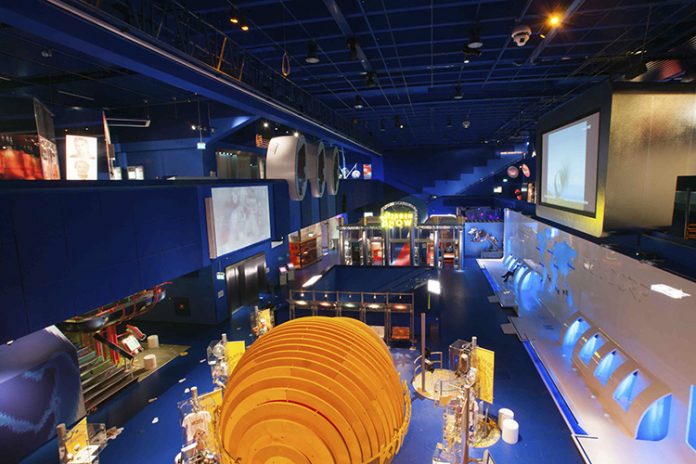The Netherlands Institute for Sound and Vision (‘Nederlands Instituut voor Beeld en Geluid’) has a very important task: to collect, preserve and make audiovisual heritage accessible for future generations. In addition to an archive containing more than one million hours of television, radio, music and film from 1898 until the present day, the institute also has a permanent exhibition displaying a selection of highlights to the public.
In a recent move to optimise the lighting concept within the exhibition space, Lichtpunt Theatertechniek replaced the previous halogen lighting fixtures with 9 CHAUVET Professional Ovation E-260WW IP fixtures. Interestingly, it was the all weather capabilities of this fixture that made it ideal for the conditions of the install.
“One of the most decisive factors of specifying the Ovation fixtures was their IP-65 rating,” commented Van Warmerdam. “Unlike the old halogen fixtures, which were constantly dust clogged, the Ovation fixture housing is completely dust and weather proof and as a result maintenance free – essential given the fixtures are positioned from the 14 metre high ceiling where accessibility is difficult.”
In addition to maintenance concerns, it was of crucial importance for the Institute that the lighting solution be both energy efficient and reliable in order to save on costs. Thanks to the durable 750W LED light source of the Ovation fixtures, the fixtures provided the ideal solution.
“The Ovation fixtures aren’t just more energy efficient than the halogen fixtures they replaced, they perform better,” commented Leon Van Warmerdam from Lichtpunt Theatertechniek. “The Ovations are in fact so powerful that we have to dim them back in order to keep the same light balance.”
Furthermore, Van Warmerdam’s decision to specify the Ovation fixtures was also influenced by the wide performance range of the Ovation fixtures, which ultimately ensure that the audiovisual specimens on display in the exhibition are illuminated as clearly as possible.
“We were very impressed with the light output, the light colour and colour representation of the Ovation fixtures,” commented Leon. “The dimming curve and the flat and even field of projection is absolutely second to none, and ensures that the specimens within the exhibition are illuminated from the most awkward and acute of angles.”
Thanks to the Ovation fixtures, Leon and his team have ensured that the Institute’s practical criteria were met. Moreover, Leon was keen to point out the greater importance that the install represents: “The Ovation fixtures have an important job to fulfil,” concluded Leon. “But as a result of their combination of performance and reliability, the exhibition will continue to educate guests on audiovisual history for a considerable time in the future.”





